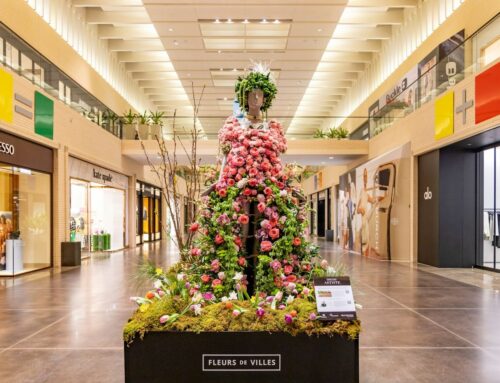Edward Hummingbird computes mathematical models by trade, but he’s a story-teller at heart. As the director and curator of Lower Greenville’s Gallery of Native American Art, Hummingbird can talk for hours about tribal myths and customs when prompted by an interested patron.
Hummingbird was raised in “Cherokee country,” he says, in Stillwell, Okla. His father, who died in 1995, was a full-blooded Cherokee, and his mother comes from an English, Irish and German background.
The contemporary art gallery represents about 25 tribes between the paintings, jewelry, pottery, kachina dolls, drums, flutes and sculptures it displays and sells. Hummingbird has researched a little of the history of all of them.
“A lot of the paintings, if they don’t have a particular story behind them, they have a very specific cultural backdrop,” Hummingbird says. “To Indian artists, their work is how they can define themselves.”
“There aren’t many people alive today that have seen a ghost dance or a sun dance. A lot of these artists quite literally paint cultures they’ve seen vanish around them.”
But don’t expect to find the typical Southwestern-themed art, which Hummingbird says has come to define Indian art for most people, in this gallery.
The art Hummingbird collects is largely from Oklahoma and represents plains and woodland tribes. It’s different from what you’d find in Santa Fe, N.M., he says.
“People have told me; I’m tired of Southwestern art,” Hummingbird says. “I’m tired of pastels and geometric figures and women with pottery on their heads.”
The artwork in his gallery is precise and clean, but its colors are vivid and the figures, although two-dimensional, are full of life and motion, Hummingbird says. Paintings depicting dancers, landscapes and legends dominated the walls.
The artists Hummingbird represents are renowned in the Native American art community, he says. But to Hummingbird, they’re mostly family friends.
Artist Jane Mauldin, for example, a Choctaw watercolorist who Hummingbird says is considered a pioneer in contemporary Native American art, used to participate in the same Tulsa, Okla., bowling league as Hummingbird’s parents. Mauldin usually only works with museums, but has made an exception in this case, Hummingbird says.
Doc Tate Nevaquaya, a Comanche giant in the Native American art world and a flutist who died in 1996, attended what today is known as the Haskell Indian Nations University in Kansas with Hummingbird’s father. The two men also played in a swing band together and were very close, Hummingbird says.
Hummingbird’s father and mother, Wilson and Dora, opened the gallery in North Dallas in 1993. His father, who suffered from an incurable heart condition, wanted to keep busy in retirement, and the gallery made his last couple of years rewarding, Hummingbird says.
Hummingbird, who now runs the gallery by himself, moved the location to 2913 Greenville in January 1996 to be closer to his Velasco Avenue home.
Hummingbird currently commutes to the University of Oklahoma each week, where he is completing his Ph.D. He teaches and studies marketing distribution systems.
“It’s a lot of number crunching,” he says.
The gallery gives him a needed break and practical experience to draw upon in the classroom, he says.
“It’s part of what helps me keep my sanity,” Hummingbird says. “It adds balance to my life.”





